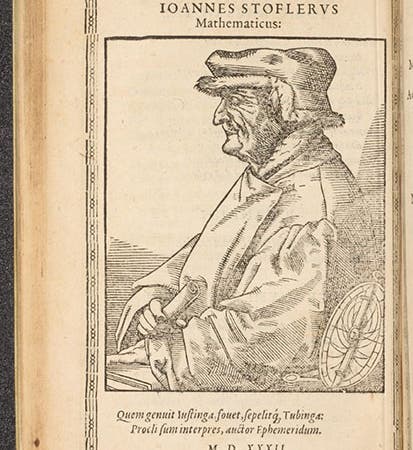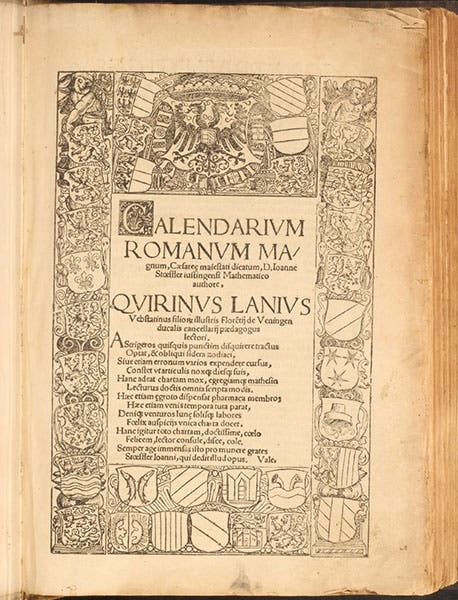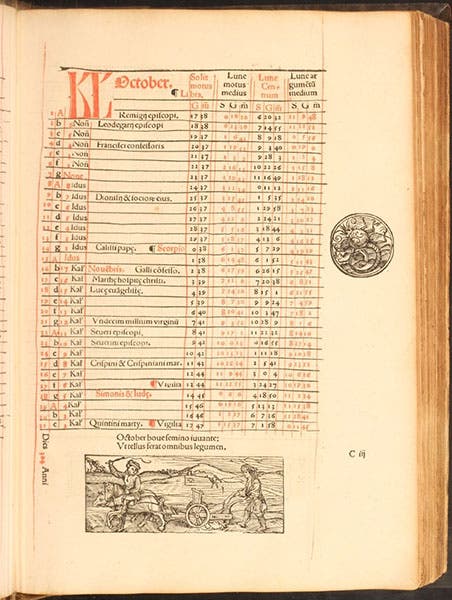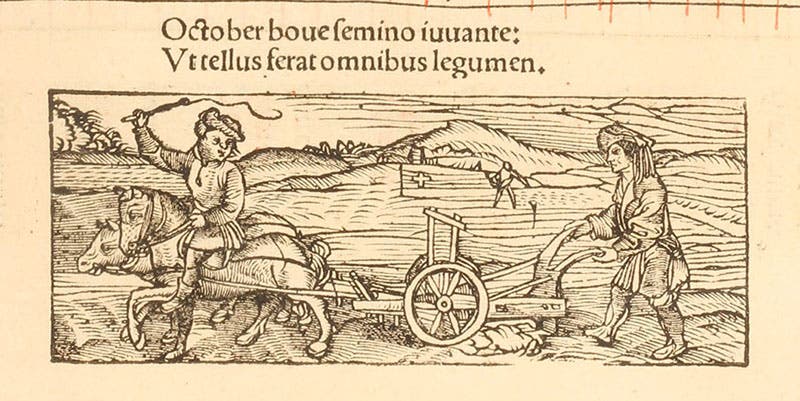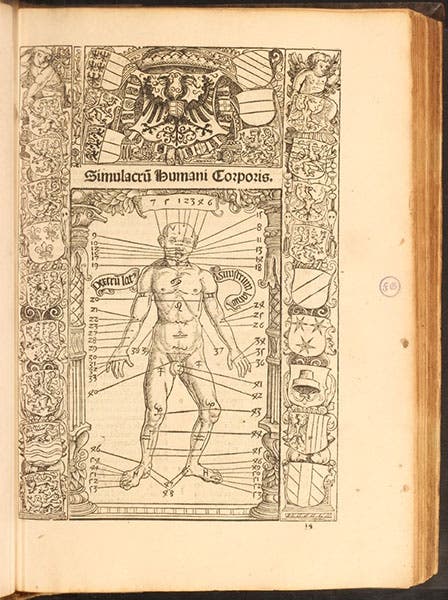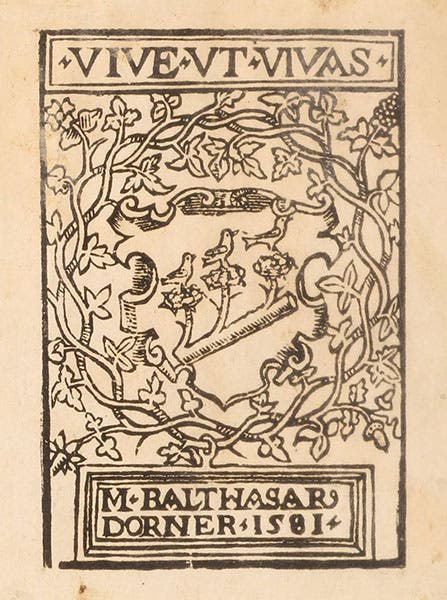Scientist of the Day - Johannes Stöffler
Johannes Stöffler, a German mathematician and astronomer/astrologer, was born Dec. 10, 1452, in Swabia. He studied at the University at Ingolstadt, spent some years as a parish priest while also making astronomical instruments and producing horoscopes, and then in 1507, he was offered the post of professor of astronomy and mathematics at the University of Tübingen. He taught there for 24 years, had such distinguished students as Philipp Melanchthon, Johannes Schöner, and Sebastian Münster, and ultimately bcame rector of the university, before he died of the plague in 1531.
Stöffler was one of those asked by the Fifth Lateran Council of the Church to look into the possibility of reforming the Church calendar to bring moveable feasts such as Easter back in line with the seasons. His response was a beautiful book, Calendarium Romanum magnum, published in 1518 by the press of Jakob Köbel in Oppenheim. We have a lovely copy in our library with a very early, probably original binding in wooden boards (second and third images). In addition to a long section on calendar reform, Stöffler provided a “Regional Abacus” (essentially a gazetteer of places in Europe); a section with predicted eclipses of Sun and Moon from 1518 to 1573 (fourth image); and an annual calendar, providing solar and lunar positions for each day of the month. As we see from the page for October (fifth image), not only were these tables handsomely printed in red and black, but each month was illustrated with a woodcut tailpiece depicting a scene appropriate for that season, such as the tying of grape vines in March, the trampling of the grapes in August, and for October, the sowing of winter crops. We show a detail of the October tailpiece below (sixth image). Stöffler also provided a section discussing the times appropriate for medical treatments, since astrology and medicine were intimately linked in the Renaissance, and he included a lively woodcut of a vein-letting man, showing the points appropriate for venesection for different ailments and at different times of the year (seventh image, below).
As for calendar reform, Stöffler thought the problems could be solved by simply turning over to astronomers the task of setting the date for Easter for each year, without constructing a rigid new perpetual calendar. The Church ignored his advice, and 64 years later, authorities would convert to a rigid new perpetual calendar, the Gregorian calendar, which is still with us.
In addition to his book on the calendar, Stöffler also was one of the foremost producers in Europe of ephemerides, the annual almanacs used by astronomers and astrologers to make their daily predictions. We do not have any of these ephemeral Stöffler publications in our Library, but I wanted to mention them, because 50 years ago, historian of astronomy Owen Gingerich used Stöffler’s ephemerides to demolish one of the longest-standing myths of Renaissance astronomy – that the simple epicycle-deferent system of the ancient astronomer Ptolemy had become so complicated and epicycle-heavy by Stöffler’s time that it had broken down, crying out for a new and simpler system – the Copernican system. Gingerich used computers – a new aid for historians in 1970 – to show that Stöffler had based his ephemerides on the medieval Alfonsine Tables, which in turn used the original epicycle-deferent system of Ptolemy, which was in fact simpler than that of Copernicus. The Ptolemaic system used by Stöffler in 1500 was in truth the same system used by Ptolemy himself in 140 C.E., and the supposed added epicycles of medieval astronomers were entirely fictitious. Historians needed to find some other reason for the Copernican revolution.
Our copy of Stöffler’s Calendarium contains a bookplate of a former owner – Balthasar Dorner (eighth image). Dorner was identified by former Library Fellow Karl Galle as a 16th-century German monk and pastor of no particular accomplishment, but who apparently had an excellent library, as other books in other modern libraries carry this same bookplate.
We have two near-contemporary woodcut portraits of Stöffler in our Library. We show the less-flattering one, included in Nikolaus Reusner’s Icones (1590), because that is the one that we have scanned and digitized (first image).
Dr. William B. Ashworth, Jr., Consultant for the History of Science, Linda Hall Library and Associate Professor emeritus, Department of History, University of Missouri-Kansas City. Comments or corrections are welcome; please direct to ashworthw@umkc.edu.

